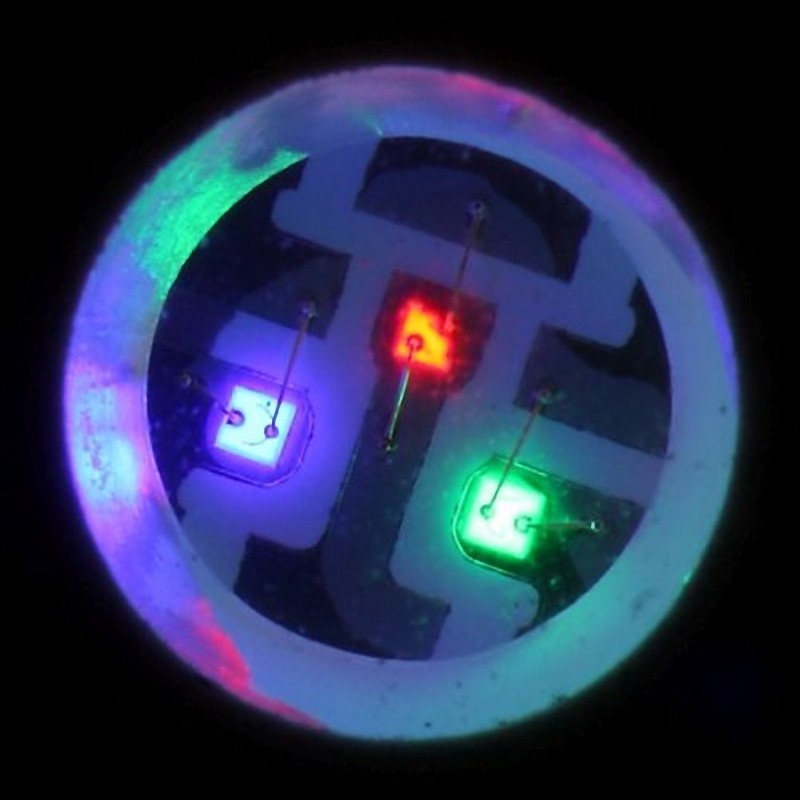NEWS
NEWS
IR LEDs will see more and more market opportunities compared with normal LEDs
01-03-2017
While normal LEDs for Lighting and backlight continue to face oversupply, IR LEDs have been attracting eyesights in the year 2017 with various applications encouraging demands.
Apart from the well-developed security surveillance industry, facial recognition, iris recognition, heart rate and SpO2 sensors, virtual reality (VR) and automotive sensors all see the great potentical requirements for IR LEDs.
IR LEDs have gone through great development, and several Taiwanese manufacturers have been in mass production for a long time. However, with new applications continuing to flourish, Robert Yeh, Chairman of Taiwan’s EVERLIGHT, agreed that IR LEDs are more profitable than normal LEDs.
Currently, IR LEDs are used mainly for security lighting in cities and automotive night vision systems. Equipped with a light-sensing camera, an automotive night vision system can display images of the road ahead at night or in darkness.
Demands for facial recognition or iris recognition solutions have been bigger due to the abundance of mobile payments. Japan’s Fujitsu and South Korea’s Samsung have already equipped their smartphones with iris recognition, and more smartphone makers would follow suit. This might even press companies to upgrade hardware in order to keep competitive.
Heart rate and SpO2 monitors with reflective sensors are currently used in healthcare and fitness applications such as wearable devices. In the future, if these monitors can be used in homecare, occupational training, and attention assist systems, demand is expected to rise more.
Regarding VR, the market value of IR LEDs for VR applications is USD 14 million in 2016, and the number is estimated to grow in 2017. This is because shipments of three major VR devices will be increased, and new players like Tencent, Nintendo, Microsoft and Dell will all launch VR devices in 2017.
However, product design, development progress and production capacity of each manufacturer vary, which may influence demands for IR LEDs.
Lastly, IR LEDs and Vertical-Cavity Surface-Emitting Diode Lasers (VCSELs) have gradually been used in automotive applications. Since the year 2000, international car makers have started to work on safety technology outside the car. The focus has then moved to driver-related research since the year 2010.
It is estimated that by the year 2020 and beyond, research and development will focus on real-time detection of driver physical and cognitive conditions to avoid accidents. Besides, car makers have been paying attention to increasing the value of cars by incorporating IR sensing technologies. Thus, applications like Advanced Driver Assistance systems (ADAS) also offer business opportunities for the industry of IR LEDs.

Apart from the well-developed security surveillance industry, facial recognition, iris recognition, heart rate and SpO2 sensors, virtual reality (VR) and automotive sensors all see the great potentical requirements for IR LEDs.
IR LEDs have gone through great development, and several Taiwanese manufacturers have been in mass production for a long time. However, with new applications continuing to flourish, Robert Yeh, Chairman of Taiwan’s EVERLIGHT, agreed that IR LEDs are more profitable than normal LEDs.
Currently, IR LEDs are used mainly for security lighting in cities and automotive night vision systems. Equipped with a light-sensing camera, an automotive night vision system can display images of the road ahead at night or in darkness.
Demands for facial recognition or iris recognition solutions have been bigger due to the abundance of mobile payments. Japan’s Fujitsu and South Korea’s Samsung have already equipped their smartphones with iris recognition, and more smartphone makers would follow suit. This might even press companies to upgrade hardware in order to keep competitive.
Heart rate and SpO2 monitors with reflective sensors are currently used in healthcare and fitness applications such as wearable devices. In the future, if these monitors can be used in homecare, occupational training, and attention assist systems, demand is expected to rise more.
Regarding VR, the market value of IR LEDs for VR applications is USD 14 million in 2016, and the number is estimated to grow in 2017. This is because shipments of three major VR devices will be increased, and new players like Tencent, Nintendo, Microsoft and Dell will all launch VR devices in 2017.
However, product design, development progress and production capacity of each manufacturer vary, which may influence demands for IR LEDs.
Lastly, IR LEDs and Vertical-Cavity Surface-Emitting Diode Lasers (VCSELs) have gradually been used in automotive applications. Since the year 2000, international car makers have started to work on safety technology outside the car. The focus has then moved to driver-related research since the year 2010.
It is estimated that by the year 2020 and beyond, research and development will focus on real-time detection of driver physical and cognitive conditions to avoid accidents. Besides, car makers have been paying attention to increasing the value of cars by incorporating IR sensing technologies. Thus, applications like Advanced Driver Assistance systems (ADAS) also offer business opportunities for the industry of IR LEDs.



